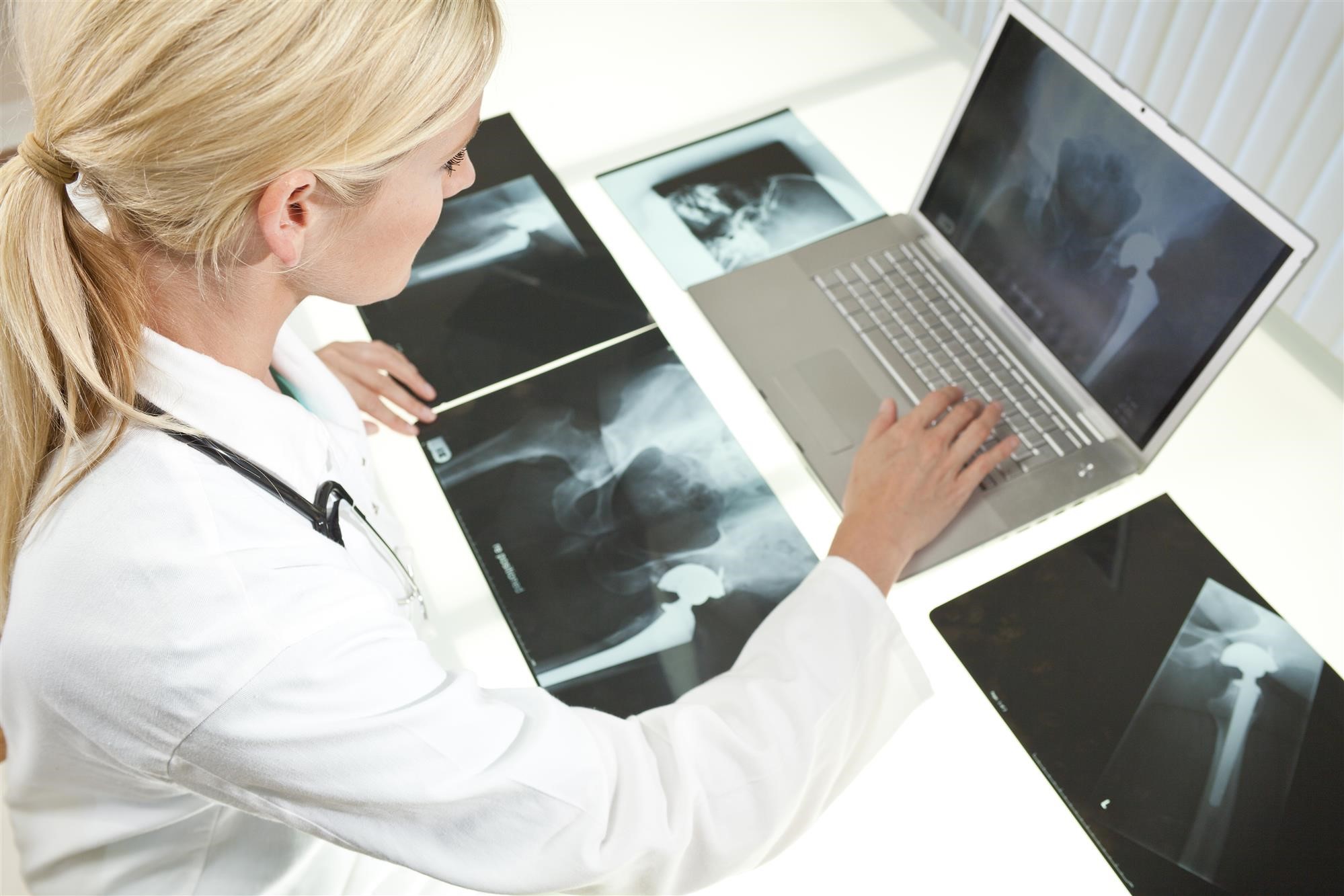
Forty-six-year-old Anne is a busy mother of three. In the last several months she has been experiencing painful sexual intercourse with bleeding and frequent constipation. Alarmed at her symptoms and worried she might have something serious like cancer, she recently saw her gynecologist, who diagnosed her with a second-degree (Stage 2) prolapsed uterus.
Her doctor explained that Anne’s uterus had dropped down into the vagina, likely due to the weakening of the connective tissues and ligaments that support the uterus—this is common in women who have had multiple children, Anne’s doctor explained.
To Anne’s dismay, her doctor recommended a simple hysterectomy (to remove her uterus) as the first line of treatment, but didn’t present Anne with other options. Although Anne doesn’t plan on having more children, she definitely wants to avoid a hysterectomy if at all possible.
What are Anne’s alternatives to surgery? We’ll delve into her options in more detail later. First, let’s take a closer look at pelvic organ prolapse, what it is, how it’s treated, and how it impacts women’s lives.
Pelvic Organ Prolapse Is Not Uncommon
Millions of women in the U.S., and many more around the world, will develop pelvic organ prolapse (POP) at some point in their lives. In 2010, there were 3.3 million women in the U.S. with pelvic organ prolapse, according to the Association for Pelvic Organ Prolapse Support.1
What is pelvic organ prolapse? Put simply, it’s when an organ in the pelvic region, such as the bladder or uterus, drops from its normal position in the lower belly and pushes against the walls of the vagina. Organs that can be involved in prolapse include:
- Bladder (the most common kind)
- Vagina
- Uterus
- Urethra
- Small bowel
- Rectum
What Causes Pelvic Organ Prolapse?
In pre-menopausal women, prolapse often develops after the pelvic floor muscles become stretched from childbirth. In menopausal and post-menopausal women, reduced estrogen levels are often the culprit—lower levels of estrogen mean lower levels of collagen, a protein that keeps tissues strong and taut. Women of any age can experience pelvic organ prolapse after a hysterectomy, which can leave other pelvic organs, such as the bladder, with less support.
Additional causes of pelvic organ prolapse include:
- Obesity, which can put abnormal pressure on the abdomen
- Chronic coughing from smoking or lung disorders, which puts pressure on the pelvic organs
- Conditions that cause paralysis of the pelvic floor muscles, such as multiple sclerosis, a spinal cord injury, or muscular dystrophy
What Symptoms Are Caused by Prolapse?
 Many women who have pelvic organ prolapse don’t have symptoms. When women do experience symptoms, they can range from relatively minor to
Many women who have pelvic organ prolapse don’t have symptoms. When women do experience symptoms, they can range from relatively minor to
debilitating. The most common symptom of POP is a feeling of pressure in the vagina due to pelvic organs pressing against the walls of the vagina.
Another common symptom of POP is that of urinary problems like stress incontinence (leaking a few drops or a stream of urine with strain from laughing, coughing, etc.). A frequent or urgent need to urinate, especially at night, is also a common urinary problem associated with POP.
Additional symptoms can include:
- A feeling of something falling out of the vagina
- Painful intercourse (with or without bleeding)
- Spotting or bleeding from the vagina
- Constipation or difficulty having a bowel movement without support at the back of the vaginal wall (from a pessary, for example)
- Low back ache
Often symptoms of pelvic organ prolapse become worse when standing, jumping, or lifting objects.
How Is POP Diagnosed?
Most of the time, a prolapse that is not causing symptoms is found during a routine exam. If you’re experiencing symptoms, your doctor will take your medical history, perform a pelvic exam, and, depending on your specific symptoms, may order the following the tests:
- Cystoscopy: Helps doctor see the interior lining of the bladder and urethra.
- Urodynamic tests: Shows how your body stores and expels urine.
- Computed tomography (CT) scan: Uses x-rays to take detailed pictures of pelvic organs.
- Intravenous pyelogram (IVP): X-ray test that shows the position, size, and shape of certain pelvic organs.

Once your doctor has ordered these tests, he or she will use this information, along with a physical exam, pelvic exam, and family history, to make a diagnosis. Pelvic organ prolapse is usually categorized in stages, from 0 to 4, as follows:
- Stage 0: No prolapse
- Stage 1: Almost no prolapse; pelvic organs are well supported
- Stage 2: Pelvic organ(s) have begun to fall, but organs are still inside the vagina
- Stage 3: Pelvic organ(s) are beginning to bulge to or beyond the opening of the vagina
- Stage 4: Pelvic organ(s) are completely outside the vagina
Before we get into treatments for POP, let’s come back to Anne’s story. Remember that her doctor advised Anne to have a simple hysterectomy as the first line of treatment, but Anne wants to avoid this.
Anne confided in her friend who happens to be a physiotherapist. Her friend suggested trying Kegel exercises to see if this could help alleviate Anne’s symptoms. Her friend recommended using a pelvic floor biofeedback device to ensure she contracts the right muscles properly.
To Anne’s delight, once she started doing pelvic floor exercises with the assistance of a Kegel exerciser, she noticed improvements over time. She no longer has pain or bleeding with intercourse, and her constipation has improved greatly. Anne sought out another doctor who says that Anne has sufficiently strengthened her pelvic floor muscles to the point surgery isn’t necessary.
Anne’s story illustrates how some women may be able to sufficiently relieve the symptoms of prolapse without invasive treatments like surgery. Yet, pelvic floor exercises, alone, may not work for all women. What are the other treatment options?
Additional Treatments for Pelvic Organ Prolapse
Which treatment is most appropriate will depend on the severity of your symptoms. Your doctor may recommend any of the following:
 Medications: Women in menopause sometimes benefit from estrogen therapy, which can help reduce vaginal dryness and prevent thinning of vaginal tissues. This can make it easier to use a pessary (described below). Women who are experiencing urinary incontinence as a result of POP may also be prescribed any number of drugs to treat UI.
Medications: Women in menopause sometimes benefit from estrogen therapy, which can help reduce vaginal dryness and prevent thinning of vaginal tissues. This can make it easier to use a pessary (described below). Women who are experiencing urinary incontinence as a result of POP may also be prescribed any number of drugs to treat UI.- Pessaries: Silicone devices that are inserted into the vagina, pessaries come in a variety of shapes and sizes and help hold the pelvic organs in place. Pessaries can also help relieve constipation.
- Physical therapy: Pelvic floor exercises, with or without a Kegel biofeedback device, can help you strengthen the muscles that hold your pelvic organs in place.
- Surgery: Surgical approaches vary, depending on the type of prolapse, but can include:
- Posterior prolapse surgery, in which the surgeon secures the connective tissue between the vagina and rectum.
- Anterior prolapse surgery, in which the surgeon pushes the bladder back up into place and secures connective tissue between the bladder and vagina.
- Uterine prolapse surgery, to remove the uterus (for women who don’t plan on having any, or any more, children).
- Vaginal vault prolapse surgery, to correct prolapses of the bladder, rectum, and/or small bowel.
Note that surgery only corrects tissue bulges, so it may not be necessary if the bulge is minor and doesn’t bother you.
Other ways women can reduce the pressure from prolapse and prevent it from getting worse include:
- Quitting smoking
- Losing weight
- Treating conditions that strain the pelvic floor, such as chronic cough
PeriCoach for Improved Pelvic Floor Strength
Designed specifically to help women improve the strength of their pelvic floor muscles, the PeriCoach system is an insertable pelvic floor exerciser for women that guides you through Kegel exercises.
The innovative device detects the contraction of your muscle as you squeeze against the device and displays your progress on your smartphone (device and smartphone synced via Bluetooth) so you can see your muscles working in real-time!
Thousands of women have experienced relief from the symptoms of pelvic organ prolapse, including urinary incontinence, with PeriCoach. PeriCoach is FDA-cleared, so you know it has met stringent product safety requirements and is safe to use. A one-time investment at under U.S. $250, PeriCoach is significantly less costly than surgery and other ongoing treatment options.
Learn more about PeriCoach and hear from real women about this easy-to-use, life-improving device.


